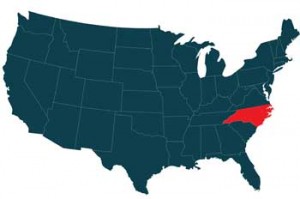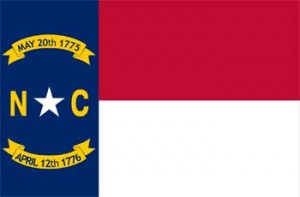North Carolina Emergency Vehicle Light State Statutes
 All North Caroline first responders, as well as many special use vehicles, are required by law to use lights for warning and safety. Specific laws dictate the color, location, and size of each type of vehicles lights. These lights are necessary for carrying out the duty of police and other emergency personnel, as well as keeping the public safe and informed of potential road hazards.
All North Caroline first responders, as well as many special use vehicles, are required by law to use lights for warning and safety. Specific laws dictate the color, location, and size of each type of vehicles lights. These lights are necessary for carrying out the duty of police and other emergency personnel, as well as keeping the public safe and informed of potential road hazards.
It is good to be aware of the various types of emergency vehicle light colors and systems in order to react in a safe and timely manner. Always leave plenty of room for emergency and service vehicles to maneuver in traffic. Whenever possible, more off the road so that law enforcement or other emergency vehicles can safely pass by and proceed to their destination as quickly as possible.
Police Lights
City police in North Carolina have traditionally used forward-facing blue lights for almost a hundred years. In recent years, however, some cities, such as Winston-Salem, have changed to a combination of blue and red flashing police lights on the tops of their vehicles. Safety reasons are sited for the change. Red lights have been shown to be more visible in daylight hours.
At least eighty-three percent of North Carolina police cars must be marked. Police car lights are mounted on top of the vehicle on regular marked cars. The remaining unmarked cars may have internal lighting with or without removable outside lights. There are various ways of confirming whether an unmarked police car is legitimate, such as alternating headlights and strobe lights which cannot be easily installed on a regular vehicle.
Sheriff vehicles and State Troopers still use an all blue light bar. A 2017 law prohibits the use of light bar lighting devices for general motorists. Blinking or strobing blue lights indicate a law enforcement officer in the performance of his or her duty and other vehicles are required to stop or move out of the way of said vehicles.
Fire Fighting Vehicles
Both municipal and rural firefighting vehicles in North Carolina are equipped with flashing red warning lights along with their sirens, whether they are paid or volunteer workers. Also, any vehicle in use by the State Fire Marshall or any of his or her representatives in the performance of their duty is also equipped with flashing red lights. All operators of regular fire-fighting and fire rescue vehicles must receive a North Carolina Fire Apparatus Driver-Operator Certification after completion of extensive training courses
Flashing red fire truck lights are also required for any county fire Marshall or assistant fire marshal in the performance of their duty. Warning lights are required even if the vehicle is not owned by the county.
Emergency Medical Vehicles
Ambulances in North Carolina also use flashing red lights on both the front and back of their vehicles in both municipal and rural setting. The drivers of these vehicles are required to attend a 6-hour classroom course as well as pass a performance test with a licensed instructor before performing this specialized job.
Other medical service vehicles which may employ a flashing red light are medical doctors or anesthesiologists responding to an emergency call from the hospital. Vehicles involved in transporting human tissue or organs for transplant may use a flashing red light for reasons of time-limitations. Also, a vehicle which has been approved by local authorities as a volunteer life-saving organization may use red warning lights, whether the vehicle is owned by the organization or an individual, so long as they are answering an official call.
Tow Trucks
All types of wrecker vehicles in North Carolina are required to be equipped with blinking amber lights. These lights should be visible for a distance of up to 500 feet. Lights should be activated as soon as soon the the service truck begins to tow a vehicle. Amber lights are used when towing a vehicle with a width of 96 inches or more, or wider than the service vehicle.
Construction, Road Vehicles
 Road maintenance or construction vehicles are equipped with amber warning lights. These lights are also required for related road equipment, including that owned by either the Department of Transportation or private contractors, during the actual performance of any road work, whether new construction or maintenance. Vehicles belonging to construction companies must always be clearly visible by being equipped with flashing amber lights for a distance of 500 feet.
Road maintenance or construction vehicles are equipped with amber warning lights. These lights are also required for related road equipment, including that owned by either the Department of Transportation or private contractors, during the actual performance of any road work, whether new construction or maintenance. Vehicles belonging to construction companies must always be clearly visible by being equipped with flashing amber lights for a distance of 500 feet.
Utility Vehicles
Vehicles use to work on roadside structures such as signs or wires must also be clearly marked for safety's sake. These and various other North Carolina utility vehicle statutes for working on utility pipes or other structures running under the road are marked with amber blinking or strobing lights which are visible for a distance of at least 500 feet.
Pilot Vehicle
All pilot vehicle operators in North Carolina must be certified by the North Carolina Department of Motor Vehicles. Vehicles over 2000 pounds require signs with the words "OVERSIZE LOAD" or "WIDE LOAD" in black letters on a yellow background. Flashing amber lights must be mounted on top of the vehicle. The lights may be either rotating beam or strobe light, with a 5-inch diameter base and a minimum of 4 inches in heigth.
Security Vehicles
For safety reasons, many mall or other security vehicles, while they may be clearly identified by painted markings, may not use any warning lights. These vehicles must remain in a specific area and are limited in their authority to stop and apprehend suspected lawbreakers. However, they do have the authority to make inquiries and request any potentially suspect individual to leave the premises. The usual color light used for security vehicles that do have them is white or yellow.
For more information about what lights may be available to you, we suggest calling your State Highway Patrol office at: 919-733-7952
*Please note that these numbers are what we are currently able to find and the numbers may have changed since this listing.
Disclaimer: The emergency vehicle light state statute guide was created by Extreme Tactical Dynamics as a guide and reference. We make no claim to the accuracy or validity of this guide. This guide was written to the best of our knowledge and has been provided to our customers as a courtesy ONLY! The information in this guide is our interpretation of the law as we have read it. We cannot be held responsible for any errors as this is only our interpretation of the law and the laws are constantly changing. We cannot be held liable or responsible for any errors and recommend that our customers refer to their local authorities to confirm the particular statue that governs their use of emergency vehicle lights.
 Facebook
Twitter
Google+
Instagram
YouTube
Facebook
Twitter
Google+
Instagram
YouTube


